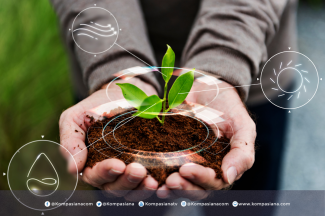Hello Kompasianers! Surely everyone is familiar with the type of fish that has always been the hallmark of food from the menus provided by street vendors to five-star restaurants.
Yep, that's right. The fish in question is catfish.
Catfish is very easy to find in the community because the cultivation process is easy to do and does not require a large enough cost. Catfish with the scientific name Clarias sp. has the highest increase in cultivation production in recent years. In addition to the soft texture of the meat, the distinctive taste and aroma of catfish is enough to invite our appetite and appetite.
Catfish farming often has positive and negative impacts. In this article, the author wants to discuss the negative impacts of Catfish Cultivation.
With regard to waste, in general, almost most of aquaculture, both catfish and similar fish commodities, can produce waste or what we often call waste.
Waste from catfish farming that accumulates heavily in waters can reduce water quality, pollute the cultivation area and be harmful to the types of aquaculture commodities in it. If it is not immediately addressed and reprocessed for productive purposes, the problem can increase.
The author wants to give tips on how to reduce the burden of catfish farming waste in aquaculture by utilizing waste for productive purposes.
Catfish farming waste is a material with high potential to be processed and reused if the waste can be collected in sufficient and efficient quantities.
The more catfish cultivators, the more waste that appears. Tips on how to utilize waste from catfish farming, namely the Biofloc Technique.
What is Biofloc Technique?
The Biofloc technique is a technique for utilizing activated sludge which was adopted from the biological treatment process of catfish farming wastewater, namely the use of floc-forming bacteria to increase nitrogen or carbon levels.
